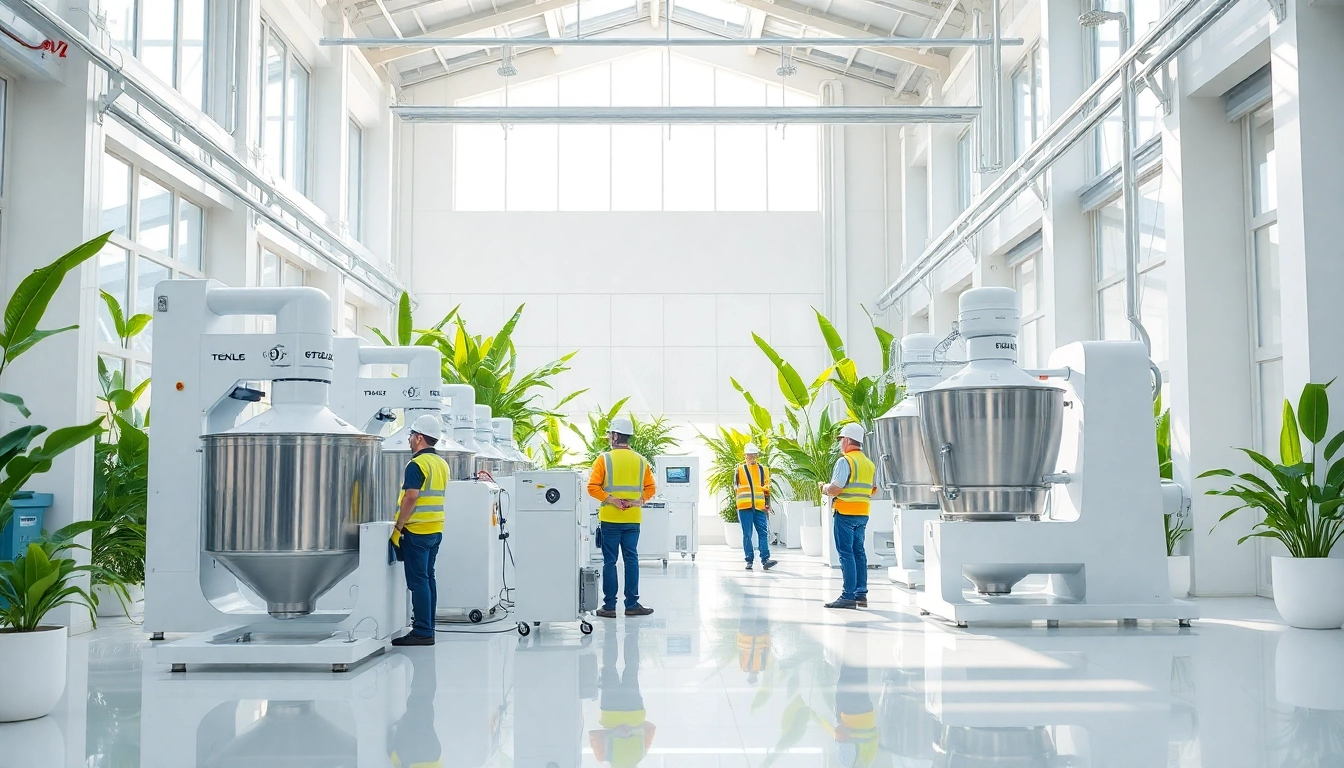Understanding the Role of a Cellulose Ether Factory
Introduction to Cellulose Ethers
Cellulose ethers are significant polymers derived from cellulose, a natural polymer found in the cell walls of plants. These compounds serve vital roles in various industries, thanks to their unique characteristics such as solubility in water, ability to form gels, and excellent adhesion properties. The Cellulose ether factory is essential in the manufacturing of these versatile substances, catering to different applications ranging from construction to pharmaceuticals.
Types of Cellulose Ethers Produced
Cellulose ethers come in various types, each tailored for specific functions. The most common include:
- Methyl Cellulose (MC): Known for its thickening and film-forming properties, MC is widely used in food products and personal care items.
- Hydroxypropyl Methyl Cellulose (HPMC): This ether is often utilized in construction applications, particularly in cement and plaster, due to its superior water retention and workability.
- Carboxymethyl Cellulose (CMC): With its high viscosity, CMC is particularly popular in the food and pharmaceutical industries for enhancing texture and stabilizing formulations.
Applications of Cellulose Ethers in Industries
The applications of cellulose ethers span multiple industries:
- Construction: Used as additives in mortars and adhesives to improve workability and hydration.
- Food: Acts as a thickener and stabilizer, ensuring consistent texture and quality in various food products.
- Pharmaceuticals: Used as excipients in drug formulations, enhancing stability and bioavailability.
- Personal Care: Functions in creams and lotions as a thickening agent and emulsion stabilizer.
Key Technologies Used in Cellulose Ether Factories
Modern Mixing Equipment
Efficient production of cellulose ethers requires advanced mixing technologies that ensure homogeneous mixtures. Modern mixing equipment, such as high-shear mixers, allows for precise control over consistency and viscosity. This equipment not only speeds up the mixing process but also improves the overall quality of the final product.
Automation and Process Control
Automation in cellulose ether factories enhances production efficiency and minimizes human error. By employing process control systems, manufacturers can monitor and adjust production parameters in real-time, ensuring optimal conditions are maintained throughout the blending, dissolution, and drying stages.
Quality Assurance Technologies
Quality assurance is critical in cellulose ether production. Factories utilize sophisticated analytical tools and technologies, such as high-performance liquid chromatography (HPLC) and spectroscopic methods, to assess product quality thoroughly. These technologies help ensure that the end products meet stringent specifications and regulatory requirements.
Production Process of Cellulose Ethers
Raw Material Selection
The production of cellulose ethers begins with the careful selection of raw materials, predominantly sourced from sustainable cellulose. The quality of the raw material directly impacts the properties of the final product. Therefore, cellulose sourced from high-grade wood pulp or cotton linters is preferred for superior performance and consistency.
Manufacturing Workflow Overview
The manufacturing workflow generally includes several key stages:
- Pre-Treatment: Cellulose is subjected to pre-treatment processes, including purification and de-watering.
- Etherification: In this chemical process, specific reagents (e.g., methyl chloride) are introduced to cellulose, forming cellulose ethers.
- Washing: The resulting product is carefully washed to remove residual chemicals, ensuring purity.
- Drying and Milling: Lastly, the cellulose ether is dried and milled to the desired granule size and consistency.
Environmental Considerations in Production
Environmental sustainability is increasingly becoming essential in cellulose ether production. Factories are adopting eco-friendly practices such as solvent recovery systems and waste recycling to minimize their environmental footprint. Efforts are also being made to source raw materials sustainably and decrease greenhouse gas emissions throughout the production cycle.
Quality Control Measures in the Cellulose Ether Factory
Testing Methods and Standards
Quality control in cellulose ether production involves a range of testing methods, including viscosity measurements, purity analysis, and biological safety tests. These procedures are often aligned with international standards to ensure that products are safe and effective for use in their respective applications.
Ensuring Consistency in Product Quality
To maintain product consistency, manufacturers often utilize batch tracking systems. This enables them to monitor specific conditions throughout the production process and make necessary adjustments in real time. Continuous training of staff and adherence to standard operating procedures are also critical to upholding quality standards.
Addressing Common Quality Issues
Common quality issues in cellulose ethers, such as variability in viscosity or unexpected solubility, can often be traced back to raw material inconsistencies or process failures. By identifying root causes and implementing preventive measures, factories can minimize these issues, ensuring that the final products meet customer expectations.
Future Trends in Cellulose Ether Manufacturing
Advancements in Sustainable Practices
As global attention on sustainability increases, cellulose ether manufacturers are expected to adopt even more environmentally friendly practices. Innovations may include using bio-based solvents and renewable energy sources, in addition to developing biodegradable cellulose ethers for specific applications.
Innovations in Product Development
Research and development in cellulose ethers are poised to yield advanced products with tailored functionalities. This includes the development of cellulose ethers that can respond to environmental changes, enhancing their applicability in responsive materials or smart coatings.
Market Forecast and Opportunities
The cellulose ether market is anticipated to grow significantly, driven by increasing demand across various industries. Emerging markets in construction, food, and pharmaceuticals provide ripe opportunities for expansion, particularly as new technologies and products continue to reshape industrial practices.


